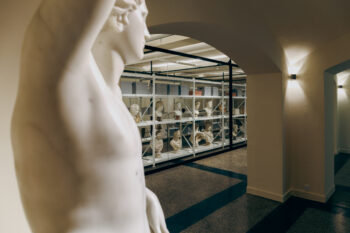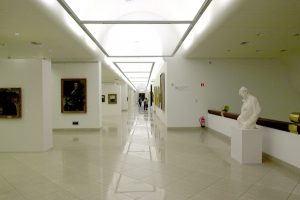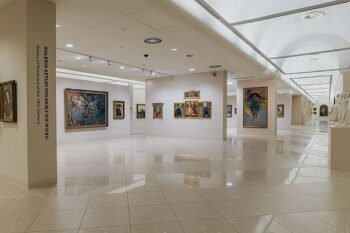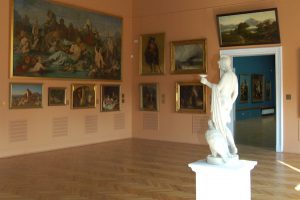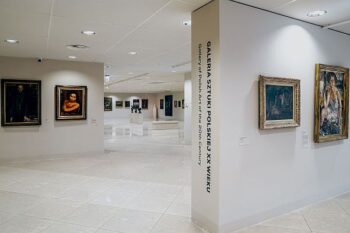The Polish Art Gallery from the 16th to the 18th century collects works of art – paintings and sculptures – created during the 16th to 18th centuries, as well as later works, which are 19th or 20th century copies of ancient artifacts, often coming from important noble collections or manor residences, and made by local artists within the borders of the Republic, both in its historical and current shape.
To the Gallery belong works created during the reign of the Elective Republic of the Two Nations, particularly in the period from 1576 – from the beginning of Stefan Batory‘s reign to 1763 – until the end of the Saxon era.
Within her scope are museum artifacts from historical collections: Poznań Society of Friends of Science, Historische Gesellschaft für die Provinz Posen, Provinzial–Museum, Kaiser–Friedrich–Museum, Gołuchów Collection, former Poznań City Museum and the direct institutional predecessor of the National Museum in Poznań – the Greater Poland Museum.
The entire collection of the Gallery consists of works with religious, historical, allegorical and genre themes. Particular place is occupied by representative noble portraits, which not only document the appearance of historical figures, but also are a treasury of knowledge about ancient costumes and old Polish funerary art, which consists of: a set of funeral portraits, commemorating both Catholics and Protestants, co–created by epitaphs, coats of arms and inscriptions, as well as sacred works. The uniqueness of the Gallery is evidenced by the iconographically outstanding monuments removed from the cult, coming from the equipment of disassembled or rebuilt churches.
Significant works of art belonging to the Polish Art Gallery from the XVI to the XVIII centuries are presented in two rooms, on the ground floor of the Old Building of the Painting and Sculpture Gallery.
In a larger, divided into three sections, column we can view portraits of nobility, religious art and historical and allegorical artifacts. The presentation is completed by sculptures. The exhibition features works by textbook artists such as Bartłomiej Strobel mł., Augustyn Mirys, Hermann Han mł., Andreas Stech and Adolf Boy.
In a smaller room is an exhibition of old Polish funeral painting. The gallery is the only public museum collection in Poland that collectively displays over sixty funeral portraits.
Funeral effigies, as they were once known, were fairly common in the 17th and 18th centuries in the Polish–Lithuanian Commonwealth. The most of them have been preserved in the former Greater Poland region. The characteristic six– or eight–sided shape was due to their original function. They were made to adorn the funeral ceremonies of the nobility and were attached to the head of the coffin. On the opposite side an inscription was placed. Heraldic boards were attached to the longer sides of the coffin.
Tomb portraits were created in the workshops of guild painters. The people portrayed were depicted very realistically and always with open eyes. Tomb portraits were painted with oil paints on copper, lead or tin plates. Exceptions include images painted on wood or silver–plated.
The background in funeral portraits is usually smooth and silver. Sometimes in this place the initials of the portrayed or their name and surname with information about the year of death or their age at the time is given. This information can also be accompanied by a coat of arms. Very rarely religious representations are used to complement the composition.
The artifacts from the Gallery are also exhibited in permanent exhibitions of almost all branches of the National Museum in Poznań: in the Museum of Applied Arts, in the Museum of the History of the City of Poznań, in the Wielkopolska Military Museum, in the Gołuchow Castle Museum, in the Rogalin Palace Museum and in the Adam Mickiewicz Museum in Śmiełów.


